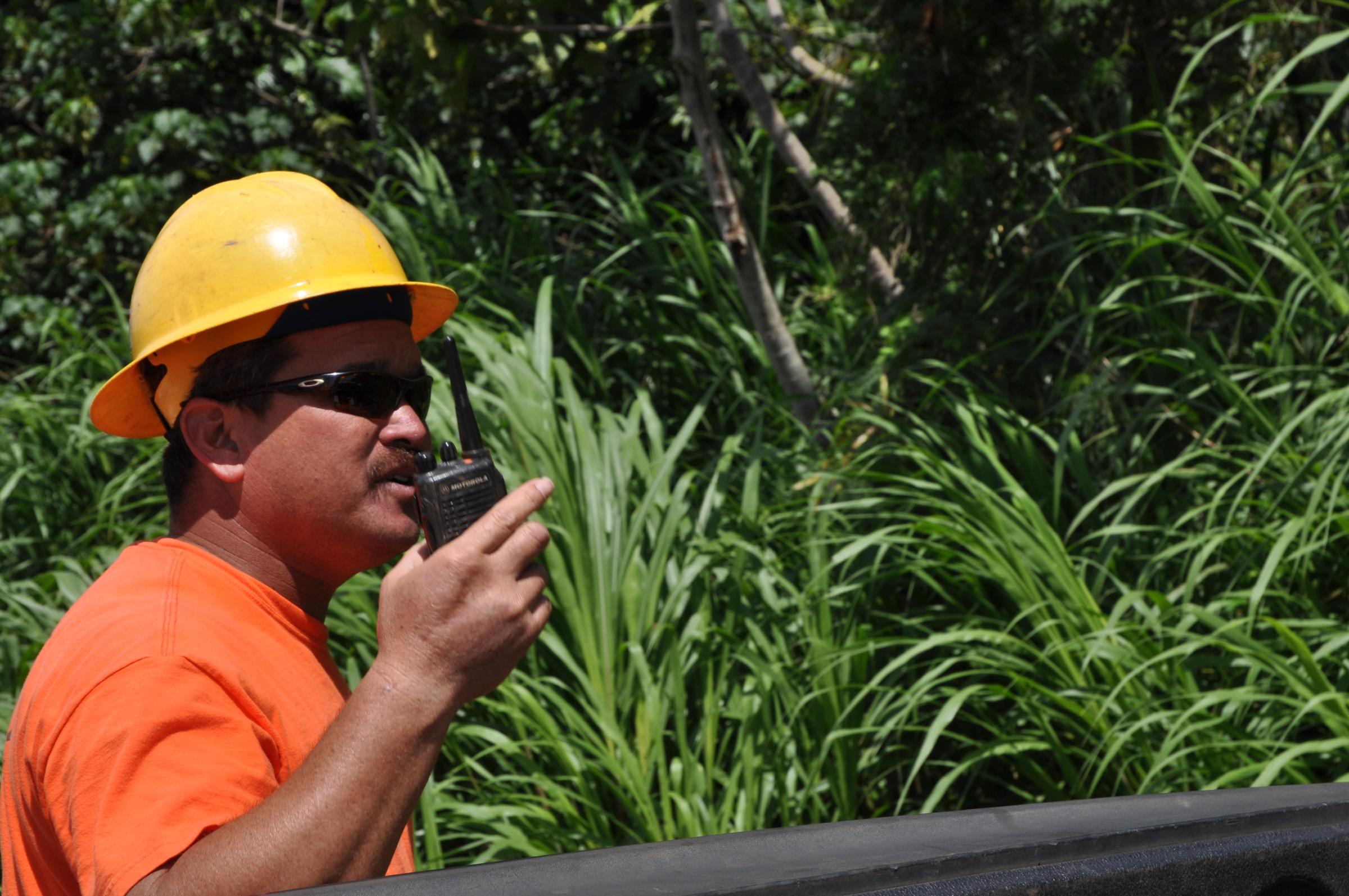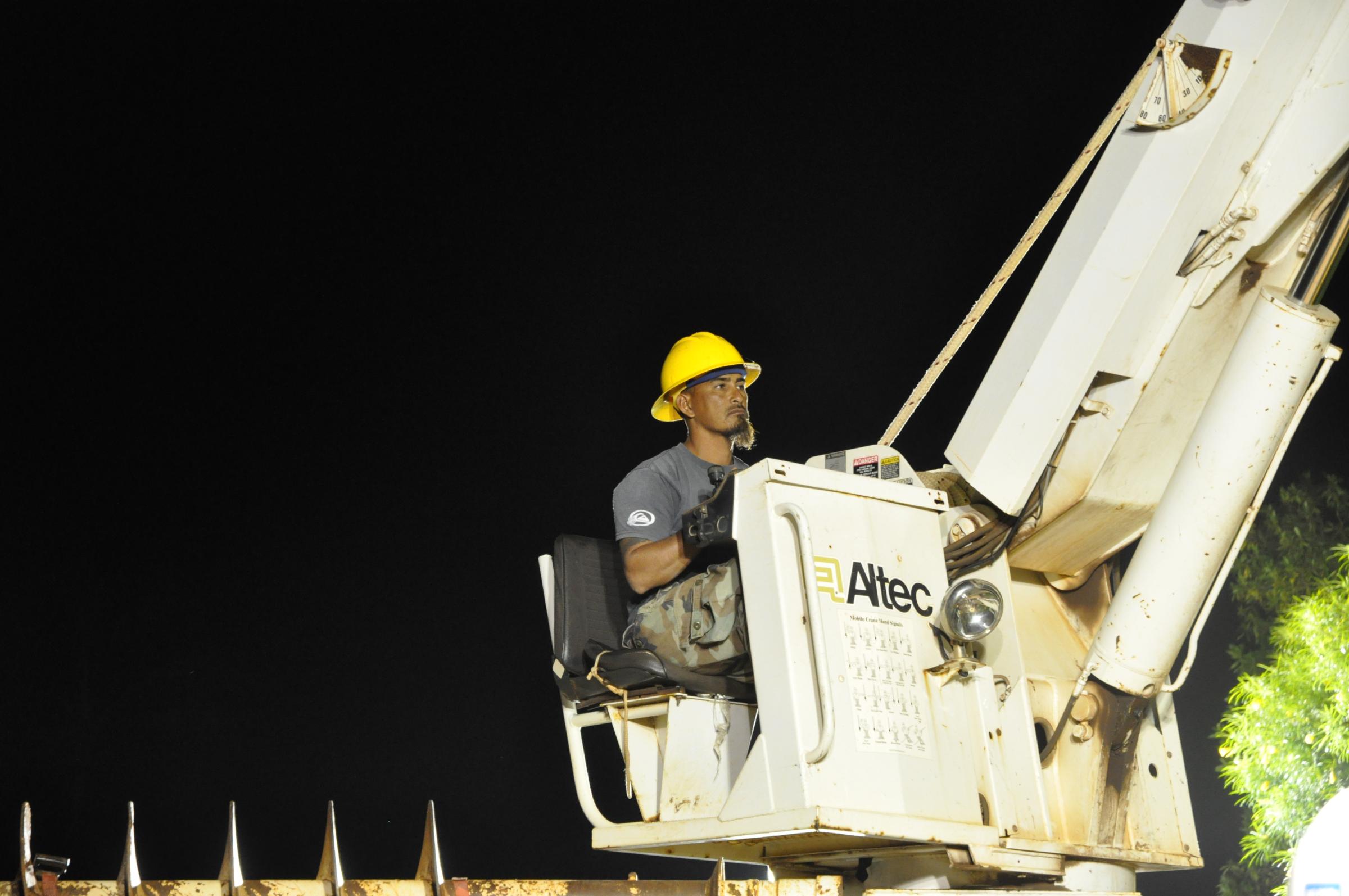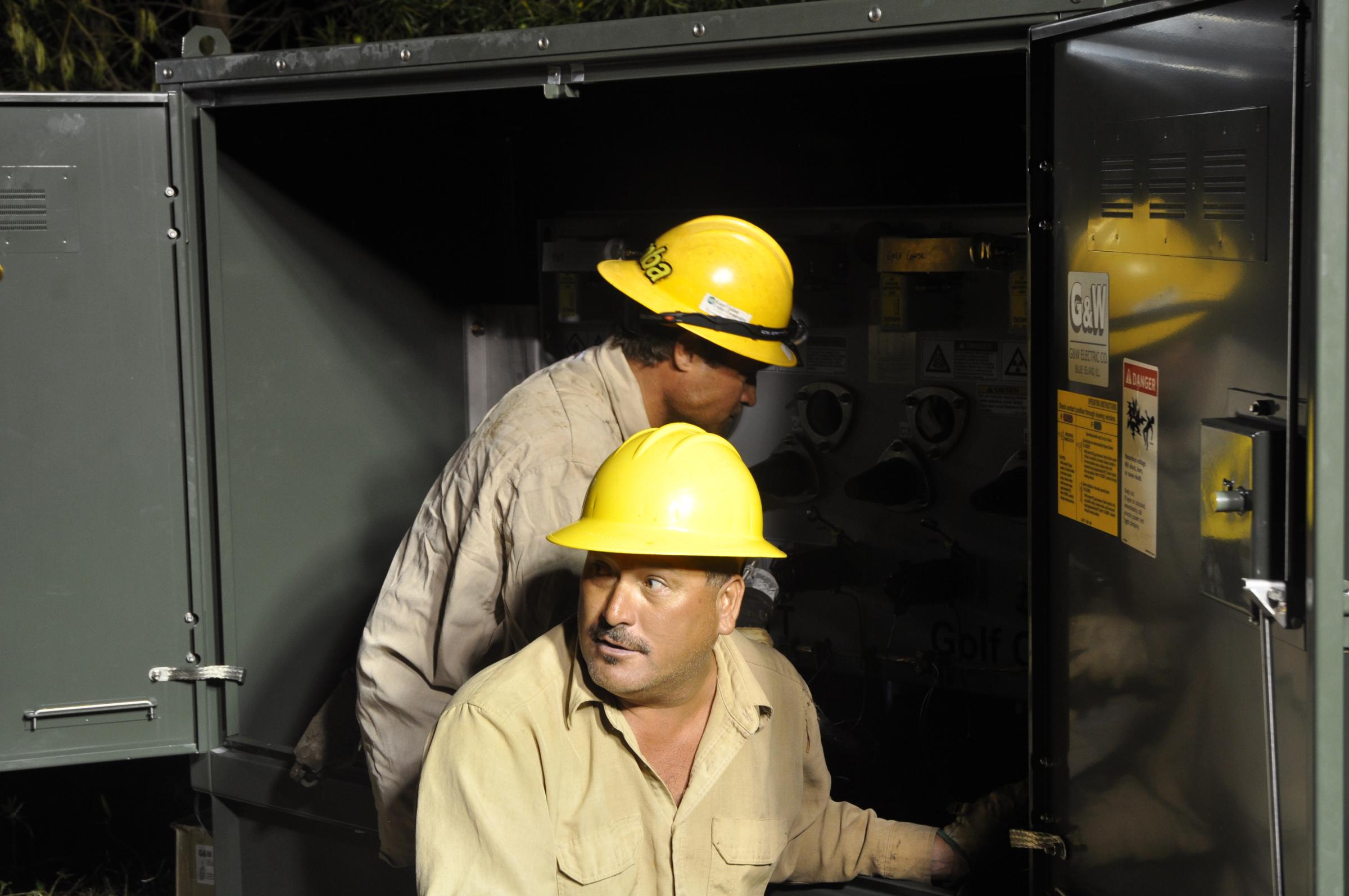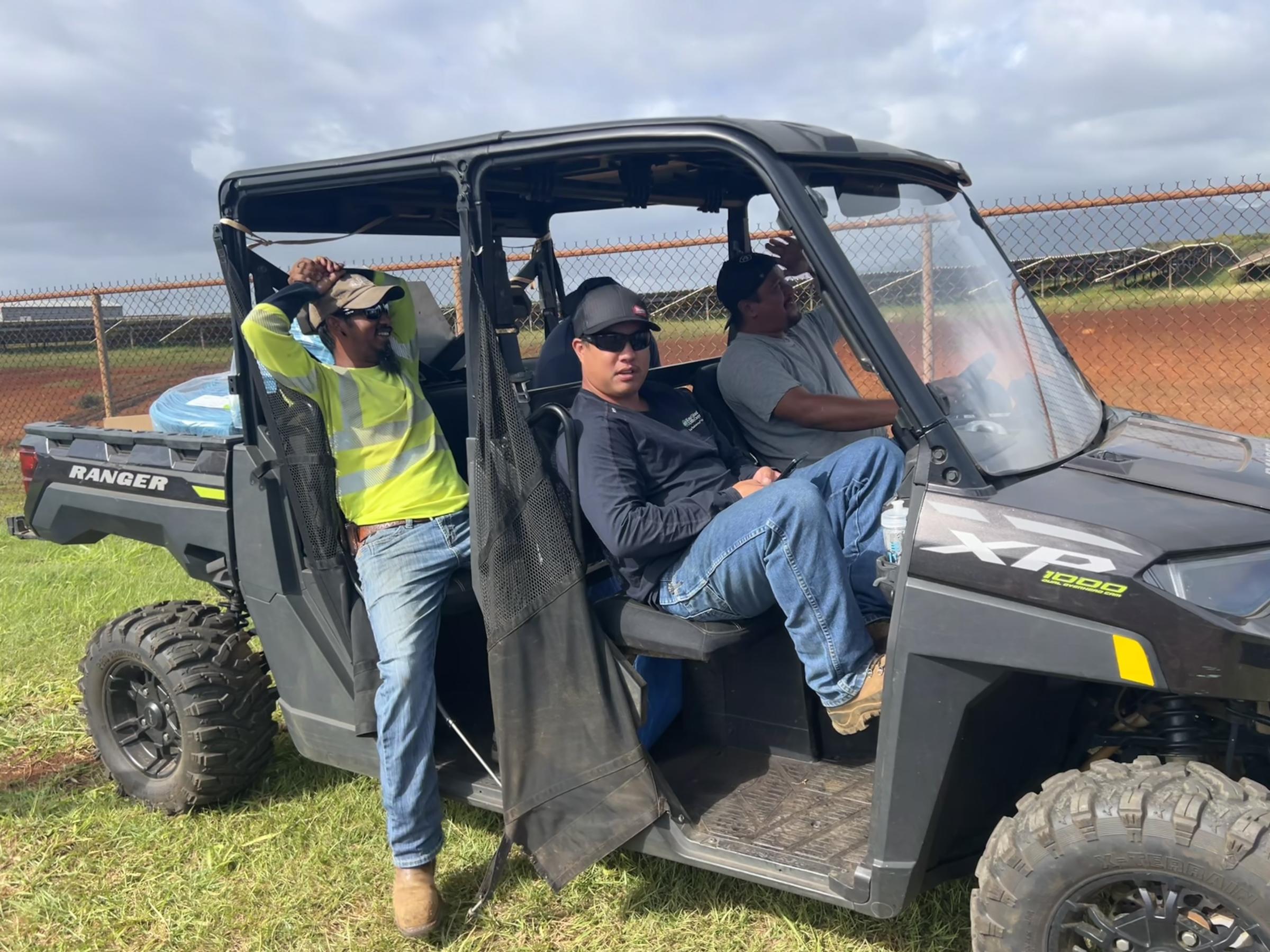Ken Yamamoto, 2011
The Eyes of the Storm
By Brandon Simpliciano, Transmission and Distribution Engineer
In honor of National Lineworker Appreciation Day on April 18, I want to highlight the KIUC T&D line crews, who are based on the east and west sides of Kauaʻi. They are in the field working hard to keep the lights on, and they endure the worst natural disasters Kauaʻi has to offer.
Being a lineworker is no easy feat, and it takes years of dedication to the craft and a lifelong practice of safety and reliability. Safety is paramount. I have heard the phrase “my brother’s keeper” used heavily when speaking about the crews’ camaraderie and care for each other’s safety.
Rather than just celebrating their duties, I wanted to pick their brains on their mindsets and motivations. Stepping into the boots of a lineworker is the best way to fully appreciate their services. Ranging from the pioneers who worked through Hurricane ʻIniki before KIUC formed as a cooperative to the next generation of KIUC’s lineworkers, here are their stories.
The Best of the West
Patrick “Kanani” Malama, Troubleshooter (32 years)
In 1987, Kanani became the youngest line crew journeyman in Hawaiʻi. At 24, he was the youngest pusher (working foreman equivalent) in the state.
Transferring from working in a construction environment he viewed as too stagnant, Kanani aimed to become a lineworker to experience a more dynamic outdoor atmosphere. He learned to overcome challenges task by task, each coming with its own set of difficulties.
Kanani has been a part of the KIUC ʻohana from the beginning and witnessed all the changes we’ve had as a co-op. For anyone looking to become a future lineworker, his advice is, “Stay in school and lead a clean life.”
John Ludington, Construction Coordinator/Inspector (25 years)
Upon graduating high school on a Friday night in 1987, John realized the following Monday that line work was his calling. Hailing from Mauna Kea Electric, John already had his fair share of pole-climbing and line work when he started at Kauaʻi Electric in 1999.
His years of experience at a young age led him to taking on the Kapaʻa troubleshooter position, which he says gave him his most challenging days. John believes he gained the most knowledge of the system In an environment where he had to be on his own during outages, having to make his own calls and decisions.
“For anyone who has a desire to become a lineperson, as an apprentice, never be afraid to ask questions and fully understand safe work practices and procedures,” he says. “Understanding those key principles will translate well in your pursuit of becoming a journeyman.”
The Beasts of the East Ken Yamamoto, Construction Coordinator/Inspector (32 years)
“You gotta work hard, it doesn’t just come to you,” says Ken, a longtime lineworker for the Kapaʻa (now Anahola) line crew. “Hard work doesn’t lie, and you will always tell apart the hard workers when trouble arrives.”
As someone who also experienced groundman work, the labor during the days of Kauaʻi Electric was highly intense. Hand-digging 12-foot holes for pole planting or trekking into the mountains for outage repairs, Ken had his share of memorable experiences in his career.
“Having a good work ethic and understanding that nothing will just come to you,” he advises anyone looking to enter the trade.
RJ Quinsaat, Working Foreman (20 years)
At first, being a lineworker did not interest RJ, but his passion grew when he became an apprentice. His most challenging times were on the 10-plus mile-long Powerline Trail, hauling tools, insulators and every piece of equipment needed for work.
Seldom do people recognize what happens in these hard-to-navigate areas. They don’t realize the full scope of work for a lineworker, who is usually only visible where people regularly live and drive. Deep in the island, out of the view of the public, RJ made the repairs necessary to keep the utility running smoothly and reliably.
Ranson “Kai” Camat, Working Foreman (10 years)
Kai’s motivation for becoming a lineworker comes from Kauaʻi’s culture. “To help the community, my kuleana was to be of service to my island,” he says.
One of his most memorable challenges as a lineworker was a hike up Ohiki in Hanalei, with all the equipment, crossarms and wire needed for repairs. Repairing insulators deep in the mountains via helicopter up Powerline Trail, these feats were completed with a “whatever needs to get done” mindset.
As you can see from these stories, being a lineworker takes hard work and a strong sense of purpose. For people like me, who don’t always see the rough realities in the field, I am humbled by their drive and passion for what they do every day to keep Kauaʻi running as smoothly as possible.
If you haven’t done so already, this Lineworker Appreciation Day, and every day, please thank a lineworker for their service.





